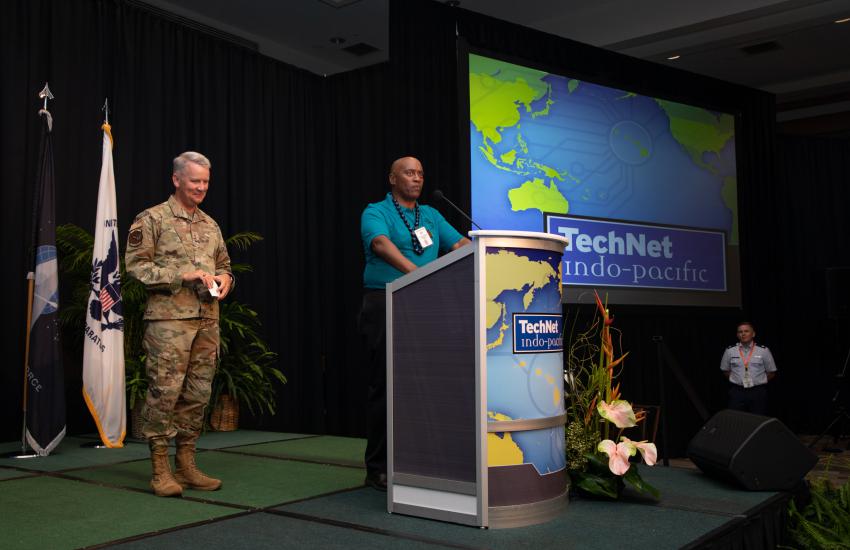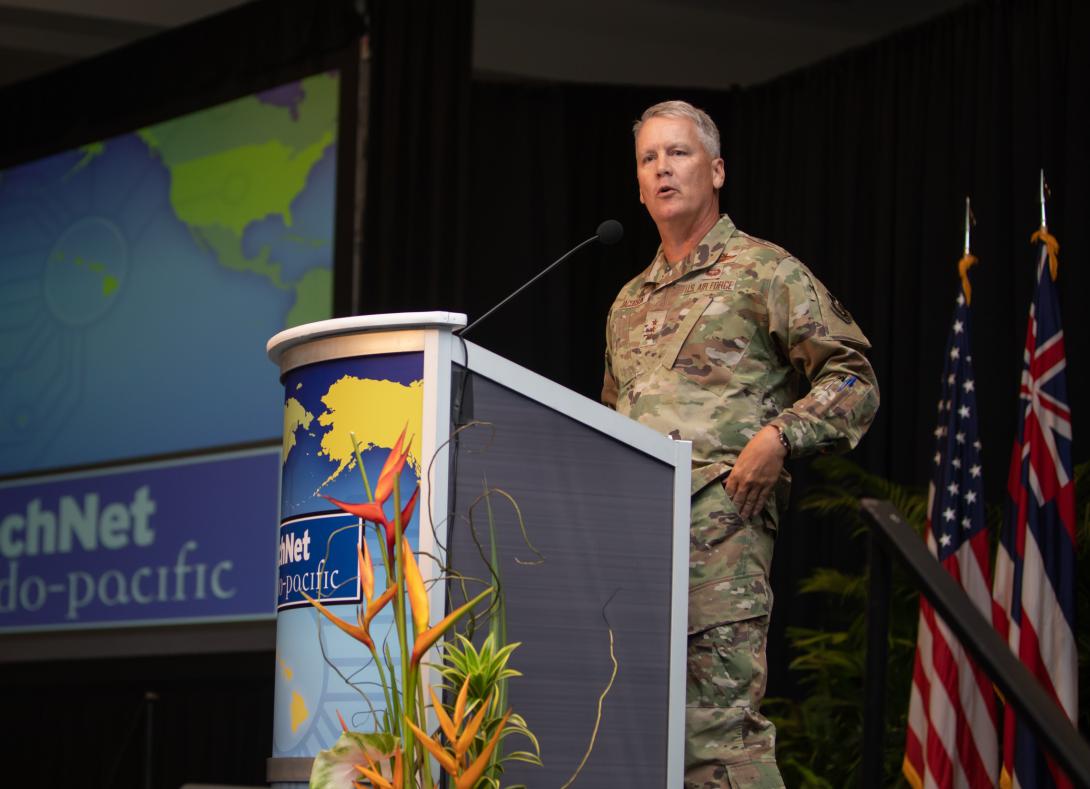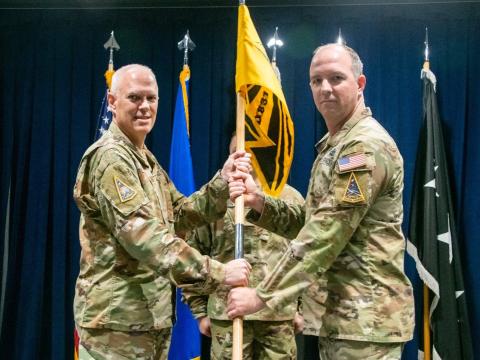PACAF Flies the Mission
The Pacific Air Forces, or PACAF, is surrounding itself with advanced aircraft, stronger partnerships and technology to address near-peer adversaries in the Indo-Pacific region, said Lt. Gen. James A. Jacobson, USAF, deputy commander, U.S. Pacific Air Forces, speaking at AFCEA’s TechNet Indo-Pacific conference on November 1.
“We now have two F-35 squadrons in Fairbanks, Alaska, combined with two F-22 squadrons in Anchorage,” Gen. Jacobson noted. “You add that together and that is 108 5th-Gen [generation] fighters sitting in one of the most strategic places in the world. You can be eight hours to Europe, or eight hours to Japan from Alaska.”
He encouraged industry to still push for technological advancements that would help to advance the proving ranges for the aircraft. “You combine that 5th-Gen power with a new, improved range, and you start to create great training centers of excellence,” he said. “I still think there's value for everybody in this room that does tech to help us improve how that range functions, because it is a vital national asset for what we practice here.”
PACAF continues to advance on its goals of making an everyday practice of its agile combat employment, or ACE—the concept of quickly moving agile, smaller groups of airmen and aircraft around the world when needed for deterrence. And it is using its new F-35s as part of this role. “It is distributed operations across a variety of locations to make sure that we can generate our combat power under duress and disaggregated in the air,” the general shared. “We are experimenting every day in theater, so seams close and we integrate sensors and shooters in ways that are vital to operating in a free and open Indo-Pacific.”
Gen. Jacobson encouraged industry to get involved with the forces exercises and experimentations, showing capabilities. “I would challenge you to see these exercises coming up over the next two, three years as a way to insert yourself,” he stated. “And if there's a capability that you think is germane to what we're trying to do, let's figure out how to integrate it into an exercise.” He noted that interested companies should reach out to Col. Donald “Thunder” Cloud, PACAF’s deputy director for Air and Cyberspace Operations.
Meanwhile in Japan, PACAF has been wielding the new KC-46 tanker aircraft for more than its traditional refueling role. “We debuted the KC-46 in Japan,” the deputy commander said. “I'll tell you in some ways I care about it as a tanker, but I actually care about it more as a combat comm [communications] node. It's cool that it gives gas and we need gas in this theater, but we need to interconnect to allies and the joint force. And every aircraft that is airborne that has the ability to move data and overcome beyond line-of-sight limitations is my new favorite thing.”
Given what is at stake with China and other adversaries in the Indo-Pacific region, PACAF is drawing even closer to Australia, already a longtime, stalwart ally in the area, as well with European nations, which may not be thought of having an interest in the region, but do.

We now have two F-35 squadrons in Fairbanks, Alaska, combined with two F-22 squadrons in Anchorage. That’s 108 fifth gen fighters sitting in one of the most strategic places in the earth:
— Kimberly Underwood (@Kunderwood_SGNL) November 1, 2022
LG James Jacobson @usairforce Deputy Commander @PACAF #AFCEATechNet @afceahawaii @AFCEA pic.twitter.com/7NosbYH5It
“Sixteen nations have participated,” Gen. Jacobson explained. “The French, the British, the Germans showed up and flew in Australia. Fifty aircraft were in the exercise. The Europeans see that the impacts of the Indo-Pacific matter in Europe and they want to be out here. And they want to be out here more often so, we're going to see our European partners integrated into more and more exercises.”
The deputy commander is pairing up with an Australian leader who will be joining PACAF soon for an assignment. “I will tell you that every day the U.S. and Australians grow closer and closer together,” he said. “I'm going to have a counterpart here in January that's an Australian deputy. We're trying to serve at the operational level of war together between the countries, because it matters in this theater.”
Lastly, Gen. Jacobson emphasized that the Air Force’s planned move of the 48 aging F-15C/D Eagle aircraft out of Japan over the next two years would not impact its ability to conduct deterrence, and would in fact, lead to more advanced aircraft training.
“The movement of [these aircraft] out of Kadena [Air Base, Japan] has no impact on the U.S. commitment to the U.S./Japan alliance and our commitment to the Indo-Pacific,” the deputy commander stated. “We've been here for 80-plus years. Just because we're changing out aircraft at Kadena doesn’t mean we are leaving Kadena. You will see multiple aircraft from around the United States Air Force spend six months at a time on an Okinawan deployment, demonstrating that the U.S. is still there. And actually it truly gives us some flexibility because I think you'll probably see some 5th-Gen aircraft show up at Kadena considerably more regularly, which gives us an opportunity to further our training opportunities."





Comments